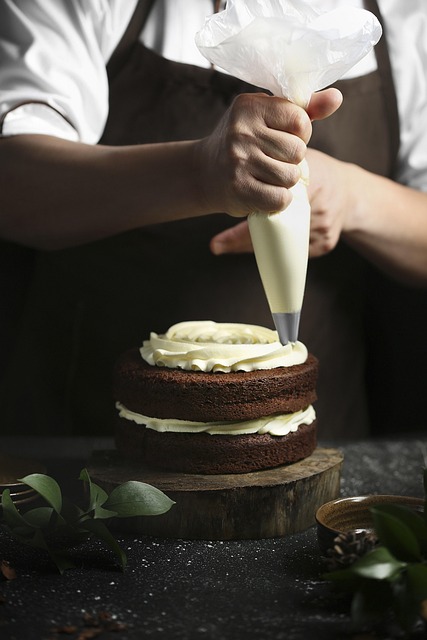Puffed Perfection: The Art of Soufflé Mastery
Embark on a culinary adventure that defies gravity and delights the senses. Soufflés, those ethereal creations that rise to lofty heights, have long captivated food enthusiasts and challenged chefs. Join us as we explore the secrets behind crafting these cloud-like wonders, from savory to sweet, and unlock the techniques that will elevate your cooking to new dimensions.

Understanding the role of proteins in egg whites is crucial. When whipped, these proteins unfold and create a network that traps air, forming a stable foam. The addition of cream of tartar or a few drops of lemon juice can help stabilize this foam, ensuring a more reliable rise. Temperature also plays a vital role – room temperature eggs whip up more easily and produce a more voluminous foam, setting the stage for a higher rise.
Mastering the Savory Soufflé
Savory soufflés offer a world of flavor possibilities, from classic cheese to inventive combinations like roasted garlic and herb. The key to a successful savory soufflé lies in creating a flavorful base that doesn’t weigh down the delicate egg white foam. Start with a roux – a mixture of butter and flour – to which you’ll add warm milk, creating a thick béchamel sauce. This forms the foundation of your soufflé, to which you’ll add your chosen flavors.
Experiment with different cheeses, from sharp cheddar to creamy Gruyère, or incorporate finely chopped vegetables for added texture and nutrition. Herbs like thyme or chives can add a fresh note, while a dash of nutmeg can enhance the overall flavor profile. Remember to season well, as the egg whites will dilute the flavors somewhat. When incorporating the whipped egg whites, use a gentle folding motion to preserve as much air as possible, ensuring a light and airy result.
Sweet Soufflés: A Dessert Dream
Sweet soufflés elevate dessert to an art form, offering a lighter alternative to traditional cakes and puddings. Chocolate soufflés reign supreme in popularity, but don’t be afraid to explore other flavors like lemon, raspberry, or even exotic combinations like matcha and white chocolate. The base for sweet soufflés often starts with a pastry cream or flavored custard, providing richness and depth of flavor.
When working with chocolate, opt for high-quality varieties with at least 70% cocoa content for a more intense flavor. For fruit-based soufflés, reduce purees to concentrate flavors and remove excess moisture that could weigh down your soufflé. A touch of liqueur can add sophistication – try Grand Marnier in an orange soufflé or Frangelico in a hazelnut creation. Don’t forget the importance of presentation; dust ramekins with sugar before filling to create a crisp exterior and help the soufflé climb the sides.
Troubleshooting Common Soufflé Challenges
Even experienced chefs can face soufflé setbacks. One common issue is deflation – that dreaded moment when your soufflé sinks faster than it rose. This often occurs due to overbeating the egg whites, which can cause them to lose stability. Aim for stiff peaks that still have a slightly glossy appearance. Another culprit can be opening the oven door too soon; resist the temptation to peek and let your soufflé bake undisturbed for at least the first two-thirds of the cooking time.
Texture problems can also arise. A grainy or curdled appearance may indicate that the base was too hot when the egg whites were folded in, causing them to cook prematurely. Always let your base cool slightly before incorporating the whites. If your soufflé is too dense, you may not have folded in the egg whites thoroughly enough, leaving pockets of unmixed base. Take your time with the folding process, being gentle but thorough to ensure even distribution.
Beyond the Basics: Creative Soufflé Innovations
While classic soufflés hold a special place in culinary tradition, innovative chefs are pushing the boundaries of what’s possible with these airy creations. Consider savory soufflé “cakes” layered with complementary flavors, or miniature soufflés served as amuse-bouches. For a modern twist, try freezing soufflés for a unique ice cream-like dessert that maintains its structure when served.
Experiment with unexpected ingredients like blue cheese and pear for a sophisticated appetizer, or incorporate global flavors like miso and wasabi for an umami-rich experience. Vegan soufflés are also gaining popularity, using aquafaba (the liquid from canned chickpeas) as an egg white substitute. These plant-based versions open up new possibilities for those with dietary restrictions or preferences. As you explore these innovations, remember that the principles of soufflé-making remain the same – it’s all about creating and preserving those precious air bubbles.
Soufflé Success Tips
-
Always use room temperature eggs for better volume
-
Prepare your ramekins properly with butter and sugar or grated cheese
-
Avoid overbeating egg whites – stop at stiff peaks
-
Fold gently but thoroughly to maintain air bubbles
-
Preheat your oven and avoid opening the door during baking
-
Serve immediately for the best texture and presentation
-
Experiment with different flavors and ingredients
-
Practice makes perfect – don’t be discouraged by initial failures
In conclusion, mastering the art of soufflé-making is a journey that combines science, skill, and creativity. From understanding the fundamental principles to exploring innovative techniques, the world of soufflés offers endless possibilities for culinary expression. As you embark on your soufflé adventure, remember that each attempt is an opportunity to learn and refine your craft. With patience and practice, you’ll soon be creating these cloud-like wonders that not only rise to impressive heights but also elevate your cooking repertoire to new levels of sophistication and delight.




